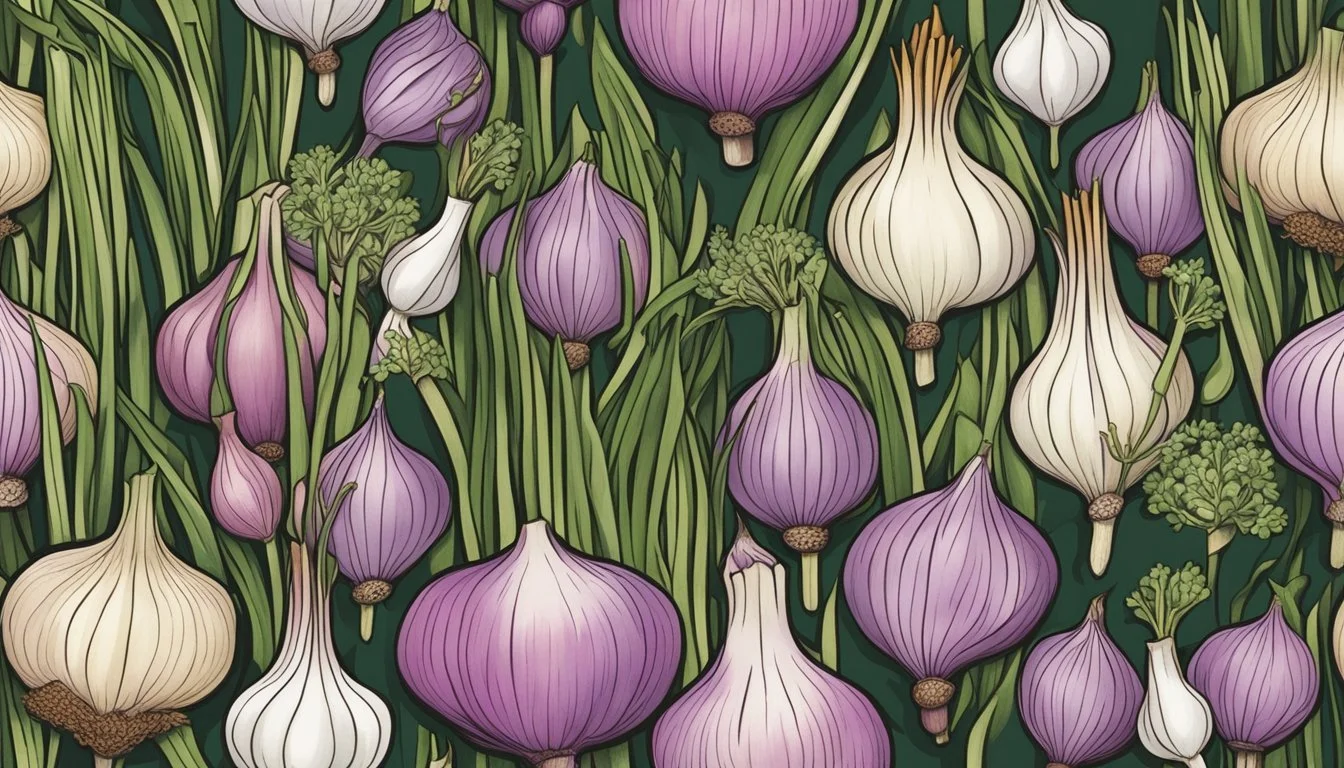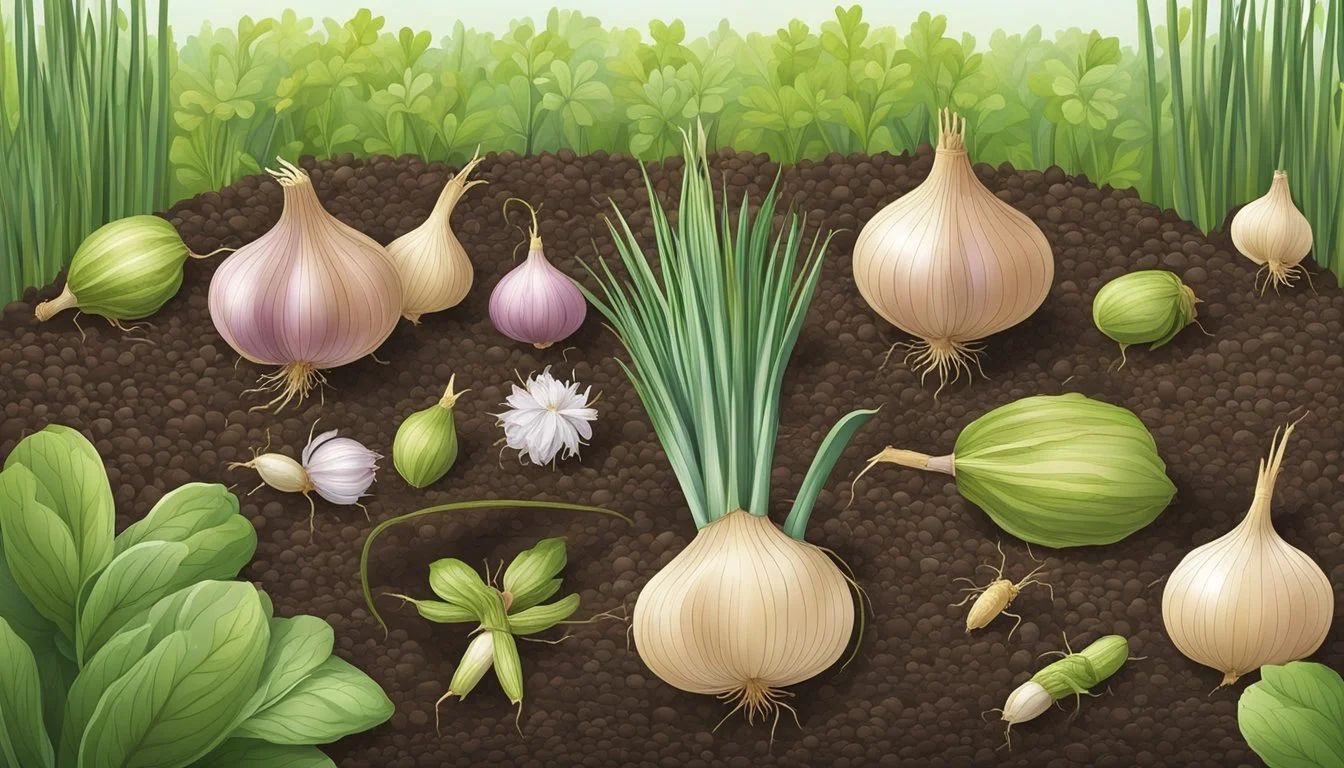Pest Control for Shallots
Safeguarding Your Crop Effectively
Shallots, although a flavorful addition to any kitchen garden, can fall victim to various pests, much like their close relatives, onions (What wine goes well with onions?) and garlic. Managing these pests is crucial to ensure healthy shallot growth and a bountiful harvest. Common pests include onion maggots, which are particularly destructive as their larvae feed on the bulbs by burrowing inside, causing severe damage. Effective pest control is necessary to mitigate these risks and can range from preventive strategies to targeted interventions.
Understanding the life cycle of shallot pests forms the foundation for effective management. For instance, timing is critical when dealing with the various stages of insect pests, from larvae to adult flies. Traditional pest control methods often involve the use of insecticides, but these must be employed carefully to avoid harming beneficial organisms or the surrounding environment. Alternative measures, such as cultural practices like crop rotation and maintaining healthy soil, can also play a significant role in keeping pests at bay.
Gardeners should also be aware of the importance of the planting process in pest control. For example, proper planting depth and spacing are vital, as densely planted shallots can attract pests and lead to an increase in fungal diseases. By combining these planting techniques with strategic pest management, gardeners can significantly reduce the incidence of pest-related problems and enjoy the rich taste of home-grown shallots without undue loss to pests.
Understanding Shallots
Shallots, esteemed members of the Allium genus, are a vital component of the onion family. They are scientifically known as Allium cepa var. aggregatum or Allium ascalonicum, distinguished by their close kinship with garlic, onions, and chives (how long do chives last?).
Shallot Varieties:
French Shallots (Grise type): Prized for their fine flavor, often referred to as "true" shallots.
Dutch Shallots (Jersey type): Larger, with a milder taste.
Gray Shallot: A traditional varietal known for excellent storage qualities.
Characterized by a subtle blend of sweet and sharp flavors, shallots grow as multiplier onions, forming clusters of offsets. Unlike the commonplace onion, they typically develop in groups of bulbs from a single planted bulb. This feature has led to their alternate name, "multiplier onions."
Key Traits:
Growth Form: Multi-bulb clusters
Taste Profile: Milder than onions, sweeter than garlic
Use: Culinary applications
List of Common Shallot Varieties:
French Shallots: Known for their robust flavor and small size, these shallots typically form a single bulb.
Dutch Shallots: Characterized by a milder taste and larger bulbs, Dutch shallots tend to form in clusters.
Gray Shallot: These shallots have a firm texture and are long-lasting, usually forming in clusters as well.
Shallots are not just limited to these common types; they encompass a range of varieties, tailored to different climates and culinary uses. Each variety possesses its own unique set of characteristics, but all share the multi-bulbous nature of the Allium family. They are easily incorporated into a vast array of dishes, enhancing flavors with their unique aromatic profile.
Pre-Planting Considerations
Before embarking on planting shallots, it is essential to understand how soil conditions, timing, and companion planting can impact the success of your crop. Addressing these areas can pave the way for a productive shallot garden.
Soil Preparation and Requirements
To yield healthy shallot crops, begin with well-drained soil rich in organic matter. The preferred soil pH is between 6.0 and 7.0; soil testing can help you adjust the pH accordingly. Loose, friable soil allows the shallot roots to expand and prevents waterlogging.
Selection and Timing
For optimal results, select high-quality shallot sets that are disease-free. Planting times vary depending on the climate; in cooler areas, shallots can be planted in fall or after the last frost in spring. Warmer climates typically favor fall planting.
Planting Shallots
When planting shallots, space the sets about 4 to 6 inches apart at a depth of around 1 inch to ensure sufficient room for growth. Rows should be spaced 12 to 18 inches apart to permit airflow and ease of maintenance.
Optimal Growing Conditions
Shallots thrive in conditions that offer full sun and temperatures ranging from 32°F to 90°F. Adequate sunlight and moderate temperatures encourage strong, healthy bulbs.
Companion Planting
Plant shallots alongside companions like strawberries, chamomile, and carrots but avoid planting near peas and beans. Shallots can benefit from the presence of these companion plants and vice versa.
Container and Raised Bed Cultivation
For gardeners with limited space, shallots can be grown in pots, containers, or raised beds. Ensure good drainage and the same soil conditions as in-ground planting.
Nutrition and Fertilization
Before planting, incorporate compost or a balanced 10-10-10 fertilizer into the soil to provide necessary nutrients. Light, additional fertilizer inputs may be needed during the growing season, depending on soil tests.
Water Management
Maintain even moisture levels, supplying about 1 inch of water per week. Avoid over-watering to prevent bulb rot and other issues associated with high humidity.
Pest Management Strategies
Keep pests at bay using physical barriers like row covers and by encouraging beneficial insects. Use manual removal, or, if necessary, appropriate organic or chemical controls that comply with local regulations.
Disease Prevention
Plant disease-free sets and rotate crops yearly to prevent soil-borne diseases. Keeping the garden free of debris and avoiding overhead watering will also help reduce disease pressure.
Managing Shallot Growth
Monitor shallot growth and provide support as needed. Gentle cultivation around shallots can help prevent competition from weeds, which can stunt growth.
Harvesting and Storage
At the end of the growing season, when shallot tops begin to wither, it's time to harvest. Cure shallots in a dry, ventilated area before storage in a cool, dark place to extend shelf life.
Advanced Topics
For experienced gardeners, exploring techniques like precision watering, specialized fertilizers, and phytosanitary measures can further enhance shallot production.
Local Practices and Global Impact
Regional growing techniques and the use of local, adapted varieties can contribute to sustainable shallot cultivation, with attention to local practices and their global impact.
Culinary Applications
In the kitchen, shallots are prized for their delicate flavor, used as a subtler alternative to onions in a wide array of dishes. Caramelized, pickled, or used as a base in sauces, shallots are versatile in culinary applications.
Frequently Asked Questions
Effective pest control is essential for the health and productivity of shallot crops. The following are common questions about managing pests in shallot cultivation.
What methods are most cost-effective for controlling pests in shallot cultivation?
They can prevent pest infestations in shallot crops economically by using barriers such as insect nets and promoting beneficial insects that prey on shallot pests. Regular crop rotation also helps reduce pest occurrence without additional costs.
Which pest control strategies are considered the best for shallot plants?
Integrated Pest Management (IPM) strategies that combine physical, biological, and chemical controls are regarded as the best practice for pest control in shallots. It includes crop rotation, maintaining biodiversity, and using pesticides only when necessary.
Which types of pests typically infest shallot crops?
Shallot crops commonly face infestations from onion maggots, thrips, and aphids. These pests can cause significant damage to the plants by feeding on bulbs and foliage, often resulting in reduced yields.
What are the recommended practices for maintaining healthy shallot plants?
They recommend maintaining plant health through good cultural practices such as ensuring proper spacing, fertilization, and irrigation. Healthy plants are more resistant to pests and diseases.
How can shallots be protected from onion-related pests?
Protecting shallots from onion-related pests can involve applying mulch to prevent the emergence of flies and using pest prevention methods early in the season before pests become established.
What pesticides are approved and effective for use on onion and shallot crops?
In cases where pesticide use is necessary, they should select pesticides that are specifically approved for use on onion and shallot crops. Always follow the label instructions for application rates and safety precautions to ensure effectiveness and minimize risks.





